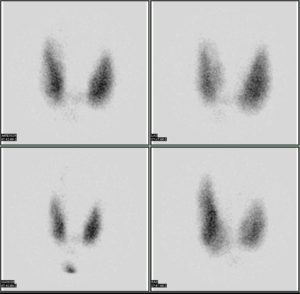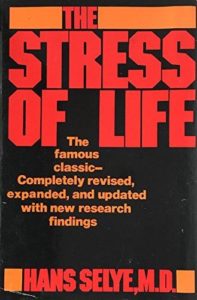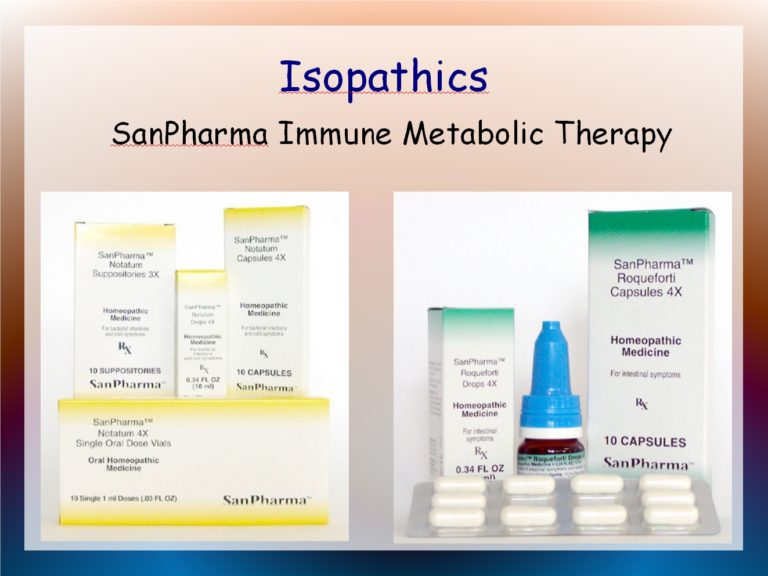Review of research studies which show use of selenium for Graves disease and other thyroid conditions.
Selenium Supplementation in Patients with Autoimmune Thyroiditis Decreases Thyroid Peroxidase Antibodies Concentrations [1]
Study was done on 70 women with either thyroid peroxidase or thyroglobulin antibodies elevated. 36 patients were given 200 mcg of selenium a day. The other 34 given a placebo. They found a significant drop in thyroid peroxidase in the selenium group, compared to placebo. “We conclude that selenium substitution may improve the inflammatory activity in patients with autoimmune thyroiditis, especially in those with high activity.”
Selenium and the Course of Mild Graves’ Orbitopathy
This study is interesting because it doesn’t just show selenium helping they thyroid, but also mild cases of orbitopathy (Graves ophthalmopathy). “Selenium administration significantly improved quality of life, reduced ocular involvement, and slowed progression of the disease in patients with mild Graves’ orbitopathy.”
Concentration of selenium in the whole blood and the thyroid tissue of patients with various thyroid disease [3]
Study of 41 women, with thyroiditis, Graves disease, thyroid nodules or cancer. Found less selenium in women with thyroid disease. “The lowest mean selenium level was achieved in the whole blood of women with Graves’ disease and the highest in the whole blood of healthy people. In the thyroid cancer tissue, we found the lowest concentration of selenium and the highest in the thyroid gland of women with nodular goiter and Graves’ disease. The low selenium levels in the thyroid tissue may increase thyroid cancer risk.”
Serum Selenium Levels in Patients with Remission and Relapse of Graves’ Disease [4]
This study found a relationship between blood levels of selenium and auto-antibodies. “Conclusion: Our data indicate that high serum Se levels (>120 ug/l) may influence the outcome of GD. This is important, as Selenium administration trials in GD, which are under discussion need to be performed with Selenium supplementation at higher dosages than used in autoimmune thyroiditis.”
Supplementation with antioxidants in the treatment of Graves’ disease; the effect on glutathione peroxidase activity and concentration of selenium [5]
Another study improvement in Graves Disease with selenium and other anti-oxidants. “Conclusion: The results of the study clearly indicate that supplementation with antioxidants in the treatment of Graves’ disease is justified, particularly those containing selenium.”
The Role of Selenium in Thyroid Autoimmunity and Cancer [6]
“There is evidence supporting considerable oxidative stress in Graves’ disease where Se supplementation, because of its free radical scavenging properties, may increase the enzymatic antioxidant activity… Low Se serum levels have also been associated with increased risk of thyroid cancer and may play a role in carcinogenesis. It is noteworthy, that the Food and Drug Administration has recently determined that there is sufficient evidence to warrant a qualified health claim for Se and cancer.”
The Evolving Role of Selenium in the Treatment of Graves’ Disease and Ophthalmopathy [7]
Another article citing the use of selenium in both hyperthyroidism from Graves Disease and Graves ophthalmopathy.
“Selenium as selenocysteine is incorporated in selenoproteins, such as glutathione peroxidase which catalyzes the degradation of hydrogen peroxide and lipid hydroperoxide that are increasingly produced in hyperthyroidism. Moreover, selenium decreases the formation of pro inflammatory cytokines, while it contributes, in synergy with antithyroid drugs, to stabilization of the autoimmune process in GD (Graves Disease) and alleviation of GO (Graves ophthalmopathy).”
Selenium may be lower in people with Graves orbitopathy, compared to those who just have Grave’s disease of thyroid. [8]
Summation – the use of selenium in Graves disease
There is an abundance of medical lititure that cites the use of selenium in Graves disease. This even includes its use as an adjunction to conventional treatments. Considering this, and the fact that selenium is a very inexpensive common supplement you would expect that every doctor treating Graves disease patients would recommend the use of selenium. However, this is not common practice at all.
True, there is no single, huge, multi-million dollar study “proving” the efficacy of selenium. That is not likely to happen, as there is very little profit to be made from a cheap, non-patentable supplement. Nonetheless, does this mean that the abundance of evidence for selenium’s use in Graves disease should be ignored?
References
[1] http://jcem.endojournals.org/content/87/4/1687.short
Selenium Supplementation in Patients with Autoimmune Thyroiditis Decreases Thyroid Peroxidase Antibodies Concentrations
The Journal of Clinical Endocrinology & Metabolism April 1, 2002 vol. 87 no. 4 1687-1691
[2] http://www.nejm.org/doi/full/10.1056/nejmoa1012985
Selenium and the Course of Mild Graves’ Orbitopathy
N Engl J Med 2011; 364:1920-1931May 19, 2011DOI: 10.1056/NEJMoa1012985
[3] http://link.springer.com/article/10.1385/BTER:88:1:25
Concentration of selenium in the whole blood and the thyroid tissue of patients with various thyroid diseases
[4] Serum Selenium Levels in Patients with Remission and Relapse of Graves’ Disease
http://www.ingentaconnect.com/content/ben/mc/2007/00000003/00000003/art00009
[5] http://www.sciencedirect.com/science/article/pii/S0009898103005321
Supplementation with antioxidants in the treatment of Graves’ disease; the effect on glutathione peroxidase activity and concentration of selenium
[6] http://online.liebertpub.com/doi/abs/10.1089/thy.2006.16.455
The Role of Selenium in Thyroid Autoimmunity and Cancer
Leonidas H. Duntas. Thyroid. May 2006, 16(5): 455-460. doi:10.1089/thy.2006.16.455. Volume: 16 Issue 5: June 6, 2006
[7] http://www.hindawi.com/journals/jtr/2012/736161/
Leonidas H. Duntas, “The Evolving Role of Selenium in the Treatment of Graves’ Disease and Ophthalmopathy,” Journal of Thyroid Research, vol. 2012, Article ID 736161, 6 pages, 2012. doi:10.1155/2012/736161
[8] Khong, J. J., Goldstein, R. F., Sanders, K. M., Schneider, H., Pope, J., Burdon, K. P., Craig, J. E. and Ebeling, P. R. (2014), Serum selenium status in Graves’ disease with and without orbitopathy: a case–control study. Clinical Endocrinology, 80: 905–910. doi: 10.1111/cen.12392




